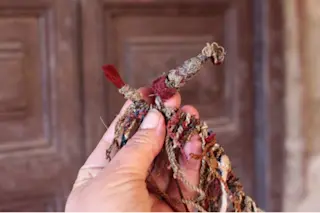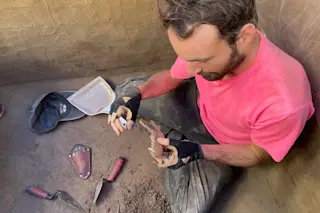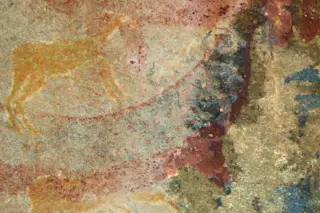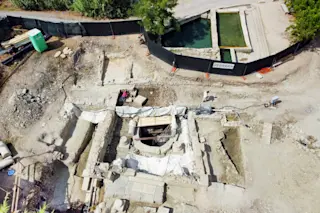Village authorities insisted on handling the khipus without gloves to feel the fibre differences. (Credit: William Hyland) Two vibrant bundles of string, over 10,000 feet high in the Peruvian Andes, may hold clues for deciphering the ancient code of the Inca civilization. Kept as heirlooms by the community of San Juan de Collata, the strings are khipus, devices of twisted and tied cords once used by indigenous Andeans for record keeping. Anthropologists have long debated whether khipus were simply memory aids — akin to rosary beads — or a three-dimensional writing system. The latter seems more possible, and decipherment more feasible, according to new research on the Collata khipus, published Wednesday in Current Anthropology. In the study, University of St. Andrews anthropologist Sabine Hyland analyzed string color, fiber and twist direction to identify 95 unique signs — enough to constitute a writing system — and proposed a phonetic decipherment of ...
Untangling the Ancient Inca Code of Strings
Discover the Collata khipus, ancient artifacts that may redefine our understanding of Inca civilization record-keeping.
More on Discover
Stay Curious
SubscribeTo The Magazine
Save up to 40% off the cover price when you subscribe to Discover magazine.
Subscribe













